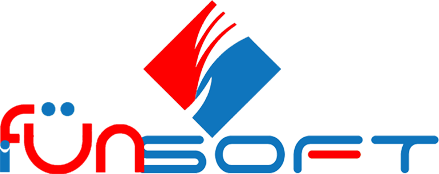Pertadad is an emerging term gaining attention in tech and business circles. In this guide, you will learn what pertadad means, why it matters today, how to use it, and what challenges and future trends lie ahead. Whether you’re a strategist, developer, or enthusiast, you’ll find actionable insights here.
What Is Pertadad?
Pertadad is a coined concept that blends “perta-” (as in pertain, perturb) and “-dad” (likely figurative), used to describe systems or processes that adapt dynamically under perturbation or change. In other words, pertadad refers to resilience-driven adaptability in systems facing changing conditions.
While there is no formal dictionary definition yet, in practice, pertadad is used to denote:
-
Adaptive response mechanisms in software, organizations, or ecosystems
-
Resilience under stress or change
-
Self-adjusting processes that maintain stability despite external shocks
Because it is a new term, interpretations vary. But common usage centers on flexibility, adaptability, feedback loops, and resilience.
Why Pertadad Matters Today
Responding to Volatility
Modern environments — economic, technological, social — change rapidly. Companies or systems with capabilities can respond to disruptions rather than being overwhelmed.
Enabling Scalable Systems
Pertadad principles help scale systems: instead of static configurations, systems evolve based on context, load, or user behavior.
Supporting Sustainability
Resilient and adaptive frameworks often last longer. Pertadad thinking encourages sustainable design: systems that evolve, not break down.
Competitive Advantage
Organizations that embody thinking often innovate faster, pivot more smoothly, and absorb shocks better — giving them an edge.
Key Principles of Pertadad
Feedback Loops & Monitoring
For pertadad to work, continuous feedback is essential. Systems must monitor internal & external states and respond.
Modularity & Decoupling
Components must be loosely coupled so that changes in one part don’t cascade destructively across the whole.
Graceful Degradation
If a module fails, the system should degrade gracefully, still functioning in limited capacity rather than collapsing.
Dynamic Configuration
Rather than fixed settings, configurations adjust at runtime based on context, metrics, or triggers.
Redundancy & Failover
Backup paths and redundancy help absorb shocks, essential in pertadad systems.
Learning & Evolution
Machine learning, heuristic rules, or adaptive algorithms help systems improve over time under philosophy.
Pertadad in Software Systems
Auto-Scaling Cloud Infrastructure
Cloud systems that spin up or down servers depending on load exemplify pertadad — adapting automatically under demand change.
Self-Healing Services
Microservices architectures detect failures and reroute traffic or restart components automatically, embodying pertadad.
Feature Flags & Canary Releases
By rolling out features gradually and adjusting based on feedback, these methods align with adaptive approach.
Configuration as Code with Runtime Overrides
Systems where configurations can shift in real time according to metrics or state, rather than remaining static, reflect pertadad.
Pertadad in Organizational Structures
Agile Teams & Learning Organizations
Teams that iterate, inspect, and adapt foster culture. They shift in direction gracefully when needed.
Decentralized Decision Making
When decisions are distributed, units adjust locally to change, rather than waiting for central direction.
Flexible Policies & Governance
Policies that allow exceptions or dynamic adaptation rather than rigid rules support pertadad.
Scenario Planning & Stress Testing
Organizations practicing stress tests and scenario planning anticipate change and build adaptive capacity.
Use Cases & Examples
E-Commerce Platform under Traffic Surge
When demand spikes, a pertadad-designed platform scales, caches, offloads, and rebalances automatically, maintaining service.
IoT Networks in Changing Environments
Sensors and devices adjust power usage, connectivity, or frequency based on conditions, reflecting behaviors.
Supply Chain Management
A supply chain built with flexibility can reroute, reallocate, or switch suppliers under disruption — that’s in logistics.
Disaster Response Systems
Emergency systems that reconfigure resource allocation, redirect flows, or adapt priorities in real time show properties.
Challenges in Achieving Pertadad
Complexity & Overhead
Adaptive systems require monitoring, decision logic, and control layers — adding complexity and computational cost.
Unintended Side Effects
Autonomous adaptation might produce unexpected results or feedback loops that destabilize the system if not carefully controlled.
Conflict of Local vs Global Optima
Local decisions may conflict with system-wide goals; balancing these tensions is hard under design.
Security Risks
Dynamic reconfiguration can open attack vectors; ensuring safety and consistency under change is nontrivial.
Human Resistance
Teams or organizations used to static policies may resist adaptive methods; culture change is required.
Best Practices for Building Pertadad Systems
-
Start small: pilot adaptive mechanisms in noncritical modules first
-
Use safe boundaries: impose constraints or guards on adaptation
-
Implement observability: metrics, logs, alerts must support adaptation
-
Validate via simulation: test in synthetic scenarios to observe responses
-
Use hybrid control: combine manual oversight with automatic decisions
-
Iterate and refine: adapt the adaptive logic based on outcomes
How to Measure Pertadad
Stability Under Shock
Measure how well the system maintains critical functions under stress (latency, throughput).
Recovery Time
How fast does the system recover from adverse changes?
Adaptation Efficiency
Ratio of benefit gained to cost incurred in adaptation (overhead vs gain).
Predictive Accuracy
How well does the system predict when to adapt, avoiding unnecessary changes?
User Experience Metrics
When adaptation occurs, does it improve or preserve user satisfaction?
Tools & Technologies That Support Pertadad
-
Observability platforms (Prometheus, Grafana, OpenTelemetry)
-
Auto-scaling frameworks (Kubernetes Horizontal Pod Autoscaler)
-
Machine learning / reinforcement learning systems
-
Chaos engineering tools (Chaos Monkey, Gremlin)
-
Feature management and A/B testing platforms
-
Policy engines (OPA, AWS Lambda logic)
Future Trends for Pertadad
-
AI-driven adaptation: reinforcement learning based controllers
-
Cross-domain application: pertadad in healthcare, smart cities, climate systems
-
Human-in-the-loop adaptation: combining human judgment with automatic systems
-
Regulation & ethics: adaptive systems must comply with rules and fairness
-
Standardization: developing patterns, frameworks, and evaluation standards
Common Misconceptions about Pertadad
-
“It means chaos” — No: proper design gives controlled adaptation.
-
“It replaces humans” — Adaptation should assist humans, not eliminate oversight.
-
“It’s magical” — It requires careful engineering, feedback, and balance.
-
“It only belongs in software” — Though common there, the idea generalizes to organizations, ecosystems, etc.
Step-by-Step Guide to Implementing Pertadad
-
Define critical metrics and objectives
-
Architect feedback loops and sensors
-
Build minimal adaptive logic with rules or ML
-
Simulate change and test responses
-
Deploy adaptively in low-risk areas
-
Monitor outcomes, retrain or refine logic
-
Expand adaptation gradually
Pertadad in Practice: A Hypothetical Scenario
Imagine a streaming platform experiencing sudden load shifts. Under design:
-
The system detects rising latency in a region
-
It spins up edge cache instances dynamically
-
Redirects traffic to less loaded servers
-
Tunes bitrate adaptation thresholds
-
Monitors user experience to roll back or proceed
All this happens within minutes, preserving service quality.
Risks and Mitigations
-
Over-adaptation: oscillations or thrashing — mitigate via dampers or hysteresis
-
Inaccurate triggers: false positives — mitigate with thresholds and verification
-
Resource waste: doing adaptation when not needed — mitigate with cost models
-
Security holes: configuration changes exploited — mitigate via auditing and constraints
When to Use (and When Not to Use) Pertadad
Use when:
-
Environment changes frequently
-
High reliability and uptime matter
-
Scaling or load shifts are common
Avoid when:
-
System is static and changes rarely
-
Cost or complexity overhead outweigh benefits
-
Simpler, rigid systems suffice
Pertadad Across Domains
-
Healthcare: adaptive treatment plans based on patient feedback
-
Smart cities: traffic, energy, waste systems that adjust dynamically
-
Agriculture: farms that respond to weather, soil, water changes
-
Finance: trading systems that adapt strategies based on market shifts
Integrating Human & Machine in Pertadad
Human judgment remains crucial. Adaptive systems should:
-
Provide transparency in adaptation reasoning
-
Allow human override or intervention
-
Learn from human corrections
This hybrid approach often yields the best outcomes.
Roadmap to Becoming a Pertadad-Minded Organization
-
Educate teams on adaptive thinking
-
Embed observability and metrics culture
-
Run experiments in low-risk settings
-
Incentivize feedback and iteration
-
Scale successful patterns across the organization
Frequently Asked Questions
What exactly does pertadad mean?
Pertadad refers to systems or processes that adapt dynamically in response to changing conditions, combining resilience, feedback, modularity, and learning.
How is pertadad different from auto-scaling?
Auto-scaling is a narrower example: encompasses broader adaptive behavior beyond just scaling — configuration changes, algorithms adjustments, routing, etc.
Can apply outside software?
Yes. Pertadad can describe adaptive organizations, ecosystems, supply chains, or any system that evolves under change.
Is always desirable?
Not always. Its overhead, complexity, or potential instability may outweigh benefits in stable, simple domains.
What skills are needed to build pertadad systems?
System architecture, control theory, observability, machine learning, feedback control, testing, and domain knowledge.
How to start adopting pertadad?
Begin with monitoring and feedback loops. Then introduce simple adaptation (e.g. autoscaling), test in controlled environments, refine logic, and gradually expand.
Conclusion
Pertadad captures a powerful and timely concept: the ability of systems, organizations, and processes to adapt intelligently under change. By combining feedback, modularity, learning, and graceful behavior, design helps you create resilient, future-ready solutions. While challenges in complexity, stability, and human factors abound, careful design, iterative testing, and hybrid human-machine control can make a practical and transformative approach. Embrace adaptive thinking, begin small, learn fast — and let guide your evolution.







